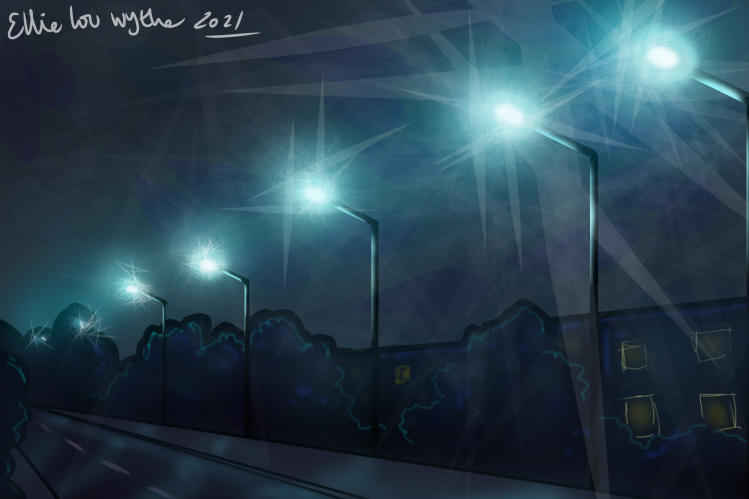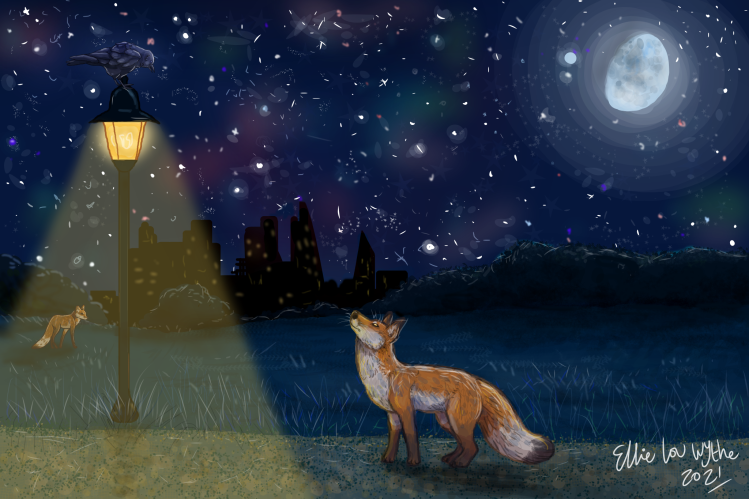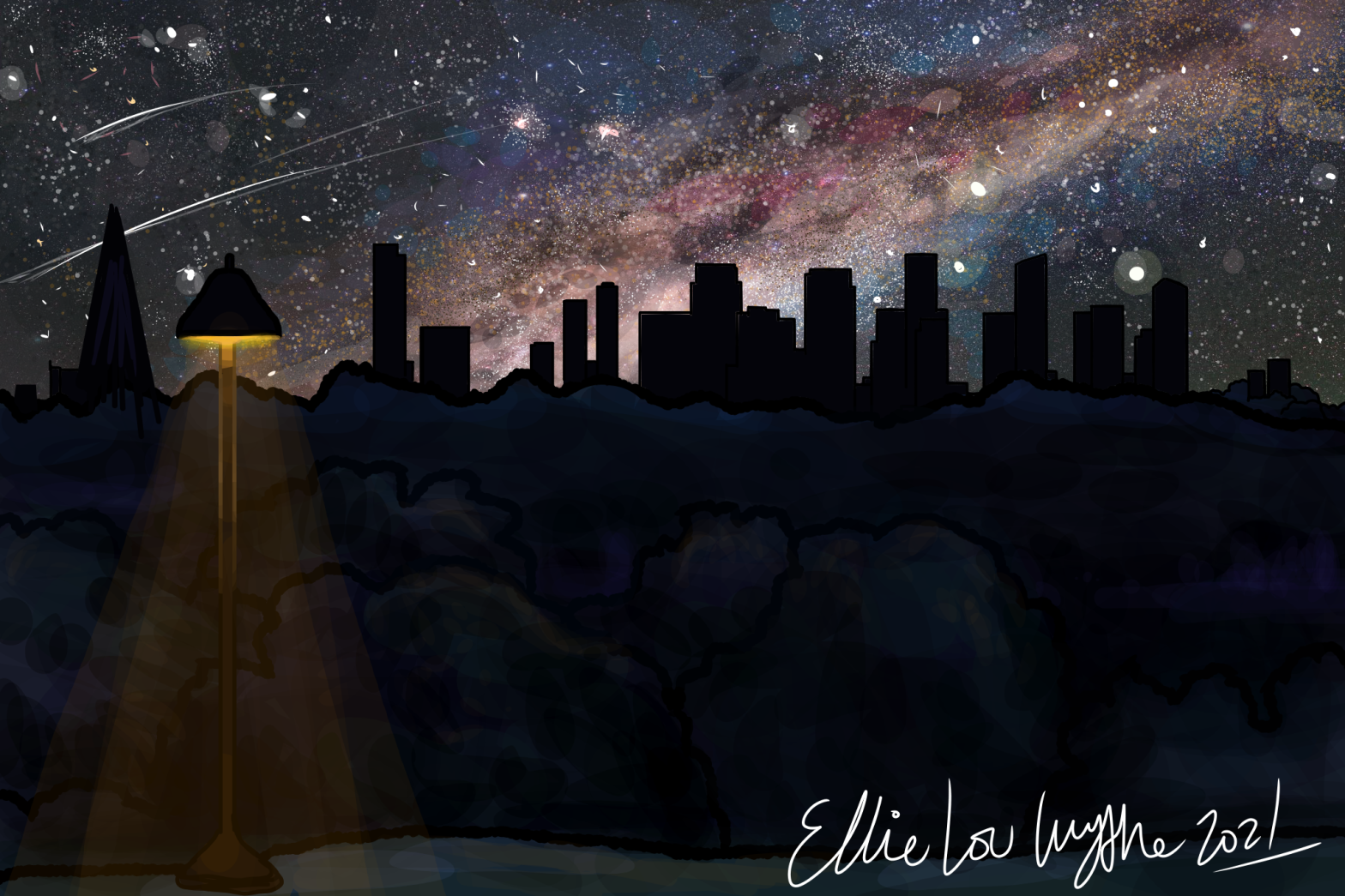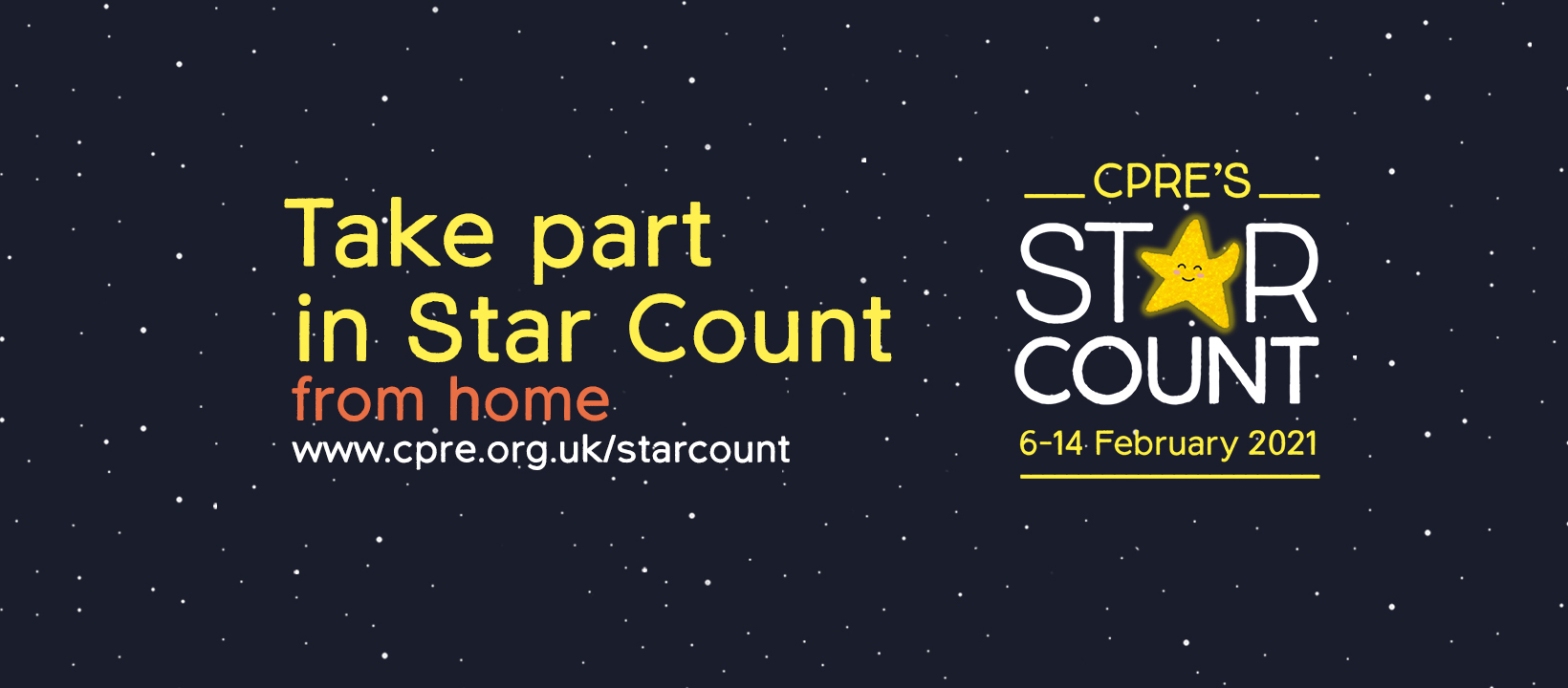In celebration of International Dark Sky Week 2021, Dark Sky London commissioned Crystal Palace-based artist Ellie Lou Wythe to create some nighttime-themed art. As part of the commission, Ellie spent some time outside in London at night, observing both the light pollution and the beauty and potential of our nights. The resulting three digital paintings capture a series of possibilities.
The first painting – a row of glaring, blue street lights – portrays the realities of light pollution in London. The second piece shows our city’s often-forgotten nocturnal wildlife that we wish to protect and help. And the third and final piece is an idealised future London where light pollution has been managed and you can see the stars and a bright Milky Way overhead.
Below, you’ll find the three Dark Sky London digital paintings, as well as a Q&A with the artist.
Q&A with artist Ellie Lou Wythe
Tell us about yourself. Where are you from and how long have you been an artist?
I’m Ellie, a Cornwall-raised artist and night sky enthusiast. Growing up, there was no shortage of inspiration surrounding my habitat – The Lizard Peninsula – where I established a love of art after a family friend (and art teacher) passed down to me his illustrated encyclopaedia of animals. It all sort of snowballed from there! Eventually I got on to acrylics, watercolours, and digital painting, which opened up a whole new set of ways to express myself.
How does the part of London you live in help or inspire your work?
Since moving to Crystal Palace in 2018, a different kind of playground has been available to me. South London is vibrant, full of possibilities, and though I miss the sea from time to time, I can’t think of a better place to be at this point in my life. Every walk I go on turns into an adventure. And, oh, the parks are incredible!
You paint a lot of scenes of the night sky and cosmos. What is your process for being inspired by and painting these kinds of images?
It’s been a reoccurring theme in my work, for the simple fact that painting the stars makes me so happy. Unfortunately, we don’t see many perfectly clear skies in London, so perhaps these pieces help bring me closer to my ideal vision of the night sky.

Have you ever visited somewhere you could see the Milky Way? How did you feel?
Yes. On the Transfăgărășean mountain road in Romania, when I was visiting a friend in summer 2017. As we journeyed up to our hotel, I rolled my window down to take a look up. It was past 1am, but I had the sleepiness and lethargy pulled right out of me by what I saw. I mean, I’ve seen a clear night in London before, but this! We pulled over. I cannot describe how energising it feels, standing under all that cosmic sky…like being swallowed up by pure energy, being lifted from the limits of your form and floating in timelessness. I have longed to feel this again ever since.
Tell us about the three commissioned Dark Sky London artworks. Can you give a bit of detail on each of the three images, where they are and what your process and inspiration were?
Absolutely! The first piece, with its offensive blinding streetlights, is an all-too-familiar sight for most city dwellers – one that we often overlook because we’re so used to it. I worked with Dark Sky London to create this snapshot of a light-polluted road to call attention to our shared problem.

The second piece features our wonderful wildlife, almost approvingly checking out some well-designed lighting (artistic licence!), and a starlit sky over the city. We wanted to draw attention to the relationship we have with other living things, and the responsibility we carry to make a better world for us all. It depicts a better-designed lamp post with its dimmed, shielded light in warm amber tones.

The final piece, and my personal favourite, is an idealistic cityscape seen from Blythe Hill Fields in southeast London. It imagines what we could achieve if we all worked together to reduce light pollution for good.

Why is light pollution and the night sky important to you, as an artist (or a human)?
I think it’s deeply important on a human level to protect Earth. Feeling connected to the universe around us helps us feel alive, gain perspective, and be awe-inspired. If we change our way of bringing light to our spaces, I truly believe it will be hugely beneficial, not just to the planet, but to the health and happiness of all its inhabitants.
Anything else you’d like to say? What’s next for you?
Bringing these works to life with Dark Sky London has been an absolute pleasure. Not only that, it has brought the issue to light for me, as it were. It can be uncomfortable, often painful, to confront the challenges ahead. Acknowledging the problem is the first step. From here, I will surely be more aware of my own part to play in future, painting stars all the while.
You can follow Ellie on her social media links below, and make sure to visit her website ellielouart.com, where you can snap up original works of art or commission her to create something.
Instagram: lilellou
Twitter: Autumnal_Husky







